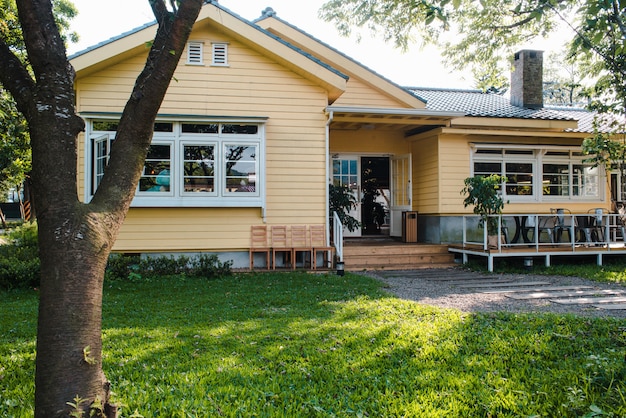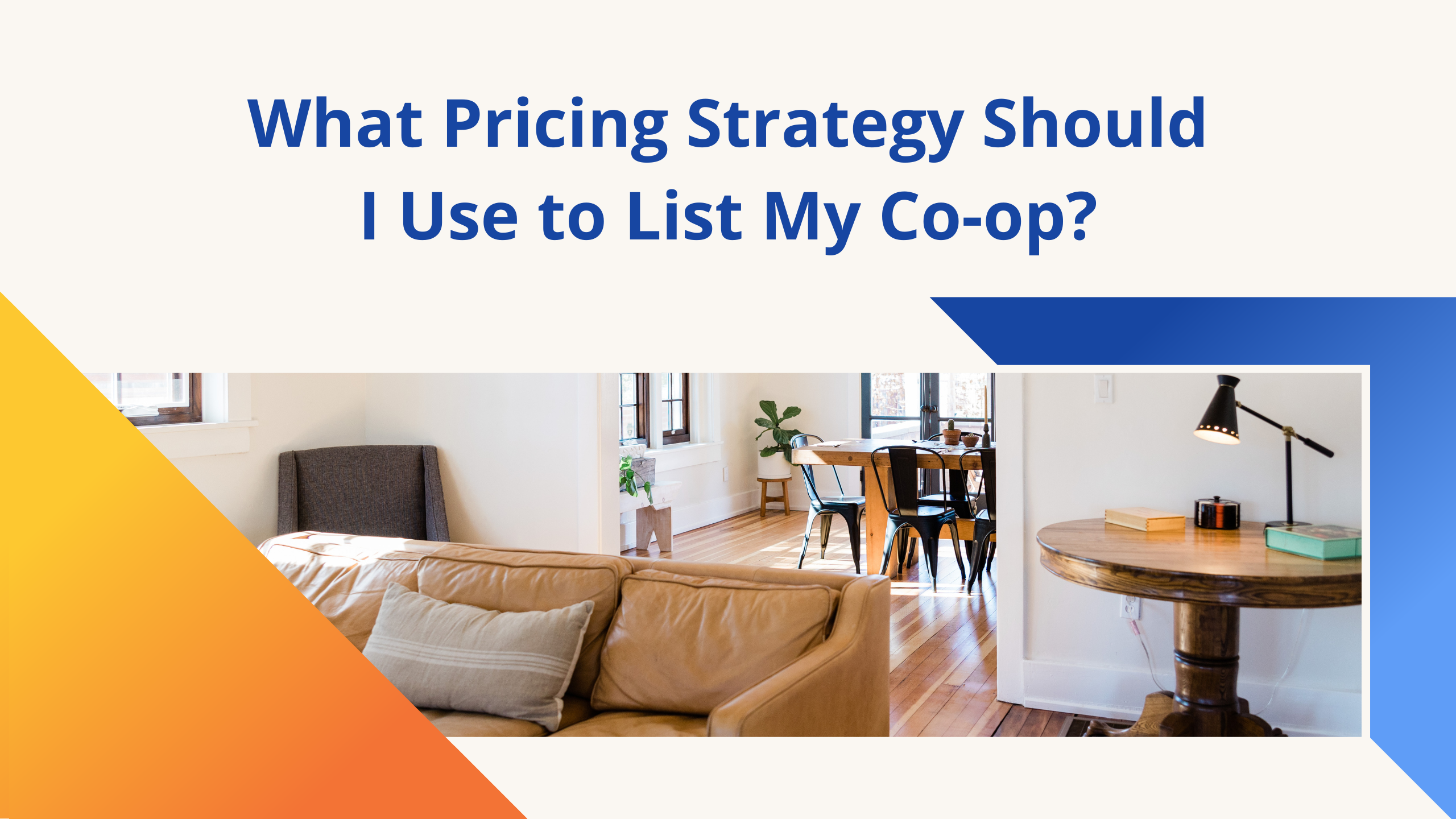Selling a co-op can be a complex process, especially when it comes to setting the right price. Pricing your co-op correctly is crucial to attract potential buyers and ensure a timely sale. If you price it too high, you may scare off buyers. If you price it too low, you might leave money on the table. So, what pricing strategy should you use to list your co-op? Let’s dive into this topic and explore various strategies to help you make the best decision.
Table of Contents
ToggleUnderstand the Market
Before setting a price for your co-op, it is essential to understand the current market conditions. The real estate market can fluctuate based on various factors, including the economy, interest rates, and local market trends. You should start by researching recent sales of similar co-ops in your area. Look for properties that have sold in the last six months to get an accurate idea of current prices. Also, pay attention to the prices of co-ops currently on the market, as they represent your competition.
Understanding the market means looking at the big picture and getting into the details. Consider the average days on the market for co-ops similar to yours. If properties are selling quickly, it might be a seller’s market, and you can price your co-op slightly higher. Conversely, if co-ops are lingering on the market, it might be a buyer’s market, and you should consider pricing your co-op more competitively. Additionally, be aware of seasonal trends. Real estate markets can heat up in spring and summer and cool down in fall and winter. Adjust your pricing strategy accordingly to match the seasonal demand.
NOTE : Thinking about selling your co-op? List my co-op in New York City with KingslandPro and reach the right buyers quickly. Let us help you achieve your goals. Get in touch now!
Evaluate Your Co-op’s Unique Features
Every co-op is unique, and its features can significantly impact its value. Take a close look at your co-op and identify what makes it stand out. Is it in a prime location with great views? Does it have modern amenities or recent renovations? Are there unique architectural details or historical significance? All these factors can justify a higher asking price. On the other hand, if your co-op has some drawbacks, such as a less desirable location or outdated features, you may need to adjust the price accordingly.
When evaluating your co-op’s features, consider the amenities offered by the building as well. Co-ops with doormen, gyms, pools, or other desirable amenities can command higher prices. If your building has a strong reputation or a well-managed board, that can also add value. Additionally, consider the condition of the unit. A well-maintained co-op in move-in condition is more attractive to buyers and can be priced higher than a co-op that needs significant work. By thoroughly evaluating your co-op’s unique features, you can better understand its value and set a more accurate price.
Consult with a Real Estate Agent
One of the best steps you can take when pricing your co-op is to consult with a real estate agent. An experienced agent who knows your local market can provide valuable insights and guidance. They can perform a comparative market analysis (CMA) to determine the value of your co-op based on recent sales of similar properties. A CMA takes into account factors such as location, size, condition, and amenities to provide a realistic price range for your co-op.
Real estate agents also have access to data and tools that can help refine your pricing strategy. They can provide information on current market trends, buyer preferences, and pricing strategies that have worked for other sellers in your area. Additionally, agents can offer advice on preparing your co-op for sale, such as staging and minor repairs, which can increase its value. Partnering with a knowledgeable real estate agent can give you the confidence to price your co-op accurately and attract serious buyers.

Consider Pricing Strategies
When it comes to setting the price for your co-op, there are several strategies you can use. Each strategy has its advantages and potential drawbacks, so it’s important to choose the one that aligns with your goals and market conditions. Here are some common pricing strategies to consider:
Market Value Pricing
Market value pricing involves setting the price based on the current market value of your co-op. This strategy is straightforward and relies on recent sales data and comparable properties. It aims to attract buyers who are willing to pay a fair price for a co-op that aligns with current market conditions. Market value pricing is a safe and effective strategy in most situations, as it reflects the true value of your co-op based on objective data.
Competitive Pricing
Competitive pricing involves setting the price slightly lower than comparable co-ops on the market. This strategy can attract more buyers and generate interest quickly. It can be particularly effective in a buyer’s market, where there is more competition among sellers. Competitive pricing can create a sense of urgency among buyers, leading to faster offers and potentially multiple bids. However, it’s important to ensure that the price is not too low, as this can lead to lower offers and less favorable terms.
Premium Pricing
Premium pricing involves setting the price higher than comparable co-ops on the market. This strategy is often used when the co-op has unique features or amenities that justify a higher price. Premium pricing can attract buyers who are looking for something special and are willing to pay a premium for it. However, this strategy requires careful consideration and a thorough understanding of the market. If the price is too high, it can deter buyers and result in the co-op sitting on the market for a long time.
Psychological Pricing
Psychological pricing involves setting the price at a level that appeals to buyers’ emotions and perceptions. This strategy can include pricing just below a round number, such as $499,000 instead of $500,000, to make the price seem more attractive. Psychological pricing can also involve creating price points that align with buyers’ expectations and perceived value. This strategy can be effective in attracting attention and generating interest, but it requires careful planning and market knowledge.
Flexible Pricing
Flexible pricing involves setting a range of prices instead of a fixed price. This strategy can include offering a lower price with the potential for negotiation or setting a price range that reflects the minimum and maximum acceptable offers. Flexible pricing can attract a wider range of buyers and provide room for negotiation. It can also create a sense of transparency and openness, making buyers feel more comfortable and confident in the process.
Highlighting Key Features in Your Listing
Once you’ve determined the best pricing strategy for your co-op, it’s essential to highlight its key features in your listing. A well-crafted listing can attract more buyers and showcase the value of your co-op. Start by writing a compelling headline that grabs attention and summarizes the main selling points. Use descriptive language to highlight the unique features and amenities of your co-op. Include high-quality photos that showcase the unit and the building, as well as any common areas and amenities.
In addition to the basic information such as the number of bedrooms and bathrooms, include details that make your co-op stand out. Mention any recent renovations, special features, and building amenities. If your co-op is located in a desirable neighborhood, highlight nearby attractions, schools, and transportation options. Be honest and transparent about any potential drawbacks, but focus on the positive aspects that make your co-op a great choice for buyers.
The Importance of Staging
Staging your co-op can significantly impact its perceived value and attract more buyers. Staging involves arranging furniture, decor, and other elements to create an appealing and inviting space. A well-staged co-op can help buyers envision themselves living there and create a positive first impression. Start by decluttering and cleaning the unit thoroughly. Remove personal items and excess furniture to create a clean and spacious environment.
Consider hiring a professional stager to enhance the overall look and feel of your co-op. A professional can provide valuable insights and recommendations on how to arrange furniture, choose color schemes, and add decorative touches. Staging can highlight the best features of your co-op and make it more attractive to potential buyers. While staging may require some investment, it can lead to a higher selling price and a faster sale.
Marketing Your Co-op
Effective marketing is crucial to attract buyers and generate interest in your co-op. In addition to listing your co-op on popular real estate websites, consider using a variety of marketing channels to reach a broader audience. Social media platforms such as Facebook, Instagram, and Twitter can be powerful tools for promoting your co-op. Share high-quality photos, videos, and virtual tours to showcase your co-op and engage potential buyers.
Email marketing can also be an effective way to reach potential buyers. Send targeted emails to your contacts and real estate professionals, highlighting the key features and benefits of your co-op. Consider hosting an open house or virtual tour to allow buyers to view the property and ask questions. Networking with real estate agents, brokers, and other industry professionals can also help spread the word and attract interested buyers.
Being Open to Negotiation
When selling a co-op, it’s important to be open to negotiation. Buyers may make offers that are lower than your asking price, and being flexible can help facilitate a successful sale. Consider the overall market conditions, the level of interest in your co-op, and the terms of the offer. Sometimes, accepting a slightly lower offer with favorable terms, such as a quick closing or fewer contingencies, can be more advantageous than holding out for a higher price.
Work closely with your real estate agent to evaluate offers and negotiate terms. Your agent can provide valuable insights and advice on how to respond to offers and counteroffers. Being open to negotiation and willing to find common ground can lead to a smoother and more successful transaction.

Conclusion
Pricing your co-op correctly is a critical step in the selling process. By understanding the market, evaluating your co-op’s unique features, consulting with a real estate agent, and considering various pricing strategies, you can set a price that attracts buyers and maximizes your return. Highlighting key features, staging your co-op, marketing effectively, and being open to negotiation can further enhance your chances of a successful sale. Remember, selling a co-op is not just about the price, but also about presenting your property in the best possible light and creating a positive experience for potential buyers.
For More Isightful Articles Related To This Topic, Feel Free To Visit: Relxnn









